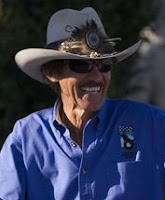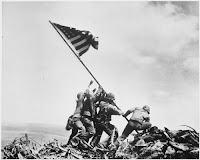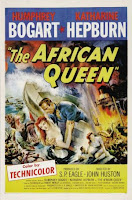 People of Versailles (including myself) only have a very short drive to see a covered bridge of noted history. As a kid I crossed this bridge with difficulty on a bike as the floor was uneven with the planking. A little later as a teen It was a nice place to set looking out the side at the sparkling Laughery creek with your best girl. On the way to the park we crossed with a few toots of the horn to warn oncoming traffic as the bridge was only one lane, but the real reason was just to hear the echo inside. I have many fawn memories of the Busching Covered Bridge and I wanted to share a few photos & facts I have found on the net with you. ......... Jack
People of Versailles (including myself) only have a very short drive to see a covered bridge of noted history. As a kid I crossed this bridge with difficulty on a bike as the floor was uneven with the planking. A little later as a teen It was a nice place to set looking out the side at the sparkling Laughery creek with your best girl. On the way to the park we crossed with a few toots of the horn to warn oncoming traffic as the bridge was only one lane, but the real reason was just to hear the echo inside. I have many fawn memories of the Busching Covered Bridge and I wanted to share a few photos & facts I have found on the net with you. ......... JackSpanning Laughery Creek, the Busching Covered Bridge is located
east of the village of Versailles, Indiana. The Busching Bridge was
erected in 1855 by Thomas A. Hardman, a local builder who later
achieved notoriety by rebuilding many of the bridges in Dearborn and
Ripley Counties destroyed by the Confederate raider John Hunt Morgan.
The Busching Bridge is a typical example of the Howe truss, a design
which signaled the start of metal construction in bridge building.
The Howe truss system was the product of the imagination of
William H. Howe. Born into a family of inventors in 1803, he worked
as a millwright before patenting his truss system in 18A0,
The patented Innovation introduced in the Howe truss was the use
of Iron bars as tension members. The use of the iron bars and turnbuckles
made it possible to regulate the tension and overcome separation
of the upper and lower cords,a problem frequently encountered in allwood
bridges. Though the use of iron tension members was a real step
forward, a number of spectacular railroad bridge failures in the
min-nineteenth century forced the adoption of all-metal truss construction.
The wood and metal design remained workable In some rural
areas . The Busching Bridge, which is still In use, is a modified Howe
truss composed of 15 irregular bays with a clear span of 170 feet.
Both the wooden x-bracIng, which Is In compression, and the metal
tie rods, which are in tension, are of different dimensions: by
varying the sizes and dimensions of the structural members, the truss
expresses its sophisticated design. The height from peak to
roadbed Is 23 feet.
Click the links below to see some photos of the bridge. Hit the back arrow to return for another photo.http://www.lindahoopesphotography.com/The-Galleries/All-the-World-is-a-Stage/We-Learn-By-Doing/3853661_iQE9H/1/220400792_3VjRr/Medium
http://www.byways.org/explore/byways/76130/photos.html?id=76384
http://en.wikipedia.org/wiki/File:036_34A_Busching,_Versailles_SP,_Versailles_Cty.jpg
http://www.galenfrysinger.com/indiana_covered_bridge_14_69_04.htm
http://www.clrconstruction.com/versailles_covered_pictures.htm
http://bluegrassmiataclub.com/?p=485
http://bridgehunter.com/in/ripley/busching/
http://www.flickr.com/photos/paterdr/4117474178/http://ripleycounty.net/
http://wb9otx.com/card/










